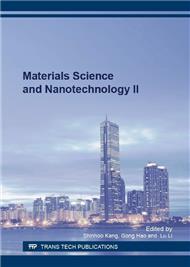p.19
p.23
p.31
p.40
p.45
p.50
p.57
p.65
p.70
Failure Analysis of an Additive Manufactured Porous Titanium Structure for Orthopedic Implant Applications
Abstract:
Porous metallic biomaterials produced using additive manufacturing technologies have gained popularity in orthopaedic implant applications. Porous metals provide enhanced biological anchorage for the bone tissue surrounding implants, and to promote rapid bone ingrowth. However, fragility associated with highly-porous metals is still a major concern. Standard mechanical testing yields merely structural parameters (i.e. stiffness and strength), but infers nothing about local strains in the micro-architecture such as struts. This study aims to develop a technique applicable for direct measurement of strain in porous titanium (Ti) structures. A low rigidity lattice Ti sample was specifically designed and fabricated using the Selective Laser Melting (SLM) technology. A novel compression test was performed, in which the surface lattice pattern of the Ti cube during the entire compression process was captured. Customized Matlab code was then used to compare lattice images in the unloaded and loaded states to compute strains. The results of full-field strain calculations were presented to demonstrate the capacity of the method. The characterization of localized strains from experiments can aid in the understanding of the mechanics of porous Ti structures, the relationship between microstructures and overall mechanical property, and the interpretation of failure patterns observed in complicated microstructures such as strut.
Info:
Periodical:
Pages:
45-49
Citation:
Online since:
August 2016
Authors:
Price:
Сopyright:
© 2016 Trans Tech Publications Ltd. All Rights Reserved
Share:
Citation:


